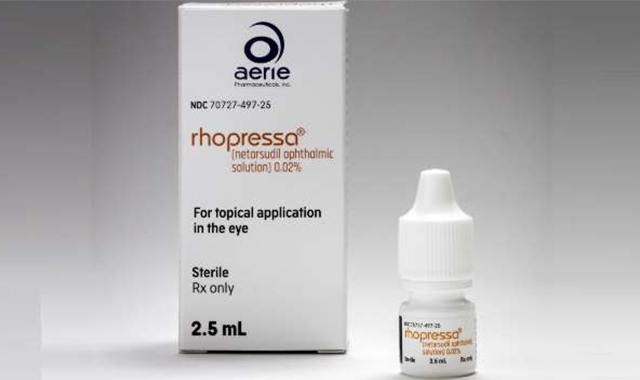First in Class Drug for Glaucoma: What Pharmacists Need to Know
Netarsudil opthalmis solution (Rhopressa, Aerie Pharmaceuticals), is approved by the FDA for treatment of elevated intraocular pressure in patients with open-angle glaucoma or ocular hypertension.

For the first time in more than a decade, a new drug class has been introduced for treatment of glaucoma.
Netarsudil opthalmic solution (Rhopressa, Aerie Pharmaceuticals, Inc.) is a first-in-class once-daily therapy that presents another option for patients to reduce intraocular pressure.1,2 It was approved by the FDA for treatment of elevated intraocular pressure in patients with open-angle glaucoma or ocular hypertension. By inhibiting rho kinase, netarsudil relaxes the trabecular meshwork of the eye, resulting in an increased outflow of aqueous humor and a reduction in intraocular pressure.
Efficacy
Glaucoma is not curable, and a significant number of patients do not achieve optimal therapeutic outcomes with available therapies. Three randomized clinical trials of varying length-three months (study 301), six months (study 304), and 12 months (study 302), which included 1,875 participants total-evaluated the safety and efficacy of netarsudil in patients with open-angle glaucoma or ocular hypertension.3 Studies 301 and 302 included participants with an intraocular pressure less than 27 mmHg. Study 304 included participants with baseline intraocular pressure less than 30 mmHg.
Participants in these studies experienced an intraocular pressure reduction up to 5 mmHg with administration of netarsudil. For participants with baseline intraocular pressure less than 25 mmHg, the reduction in intraocular pressure was similar among participants administered netarsudil once daily and participants administered timolol 0.5% twice daily. Participants with a baseline intraocular pressure equal to or greater than 25 mmHg experienced a smaller reduction of intraocular pressure with netarsudil use in comparison to timolol 0.5%.
Safety
The most common adverse effect associated with netarsudil use in clinical trials is conjunctival hyperemia (redness of the eye). This occurred in 53% of study participants. Corneal verticillata (a whorl-patterned corneal deposit of the drug bound to cellular lipids of the corenea) presented in approximately 20% of participants. It may occur after one month of daily use, does not negatively effect vision, and can resolve after discontinuation of the drug. Conjunctival hemorrhage, pain, and erythema at the site of instillation of the drug; corneal staining; increase in tear production; erythema of the eyelid; blurred vision; and a reduction of visual acuity are all adverse effects associated with use of netarsudil.
Netarsudil is dispensed as a multidose container. Bacterial keratitis is associated with use of multidose container ophthalmic products. Advise patients to avoid touching the dropper portion of the container to any surface, including the eye, to reduce the risk of contamination of the solution and possible subsequent infection of the eye. A study of healthy volunteers demonstrated minimal systemic absorption of netarsudil following daily instillation at the recommended dosage in both eyes. There is no available data regarding the effect of netarsudil on fertility, teratogenicity, or breastfeeding.3
Dosage
Netarsudil 0.02% solution is approved for use as a single drop instilled in the affected eye once daily in the evening. Instruct patients to remove contact lenses prior to instilling netarsudil. The solution contains benzalkonium chloride, which some contact lenses may absorb. Lenses may be inserted into the affected eye 15 minutes after instillation of netarsudil.
References
1. Wang, SK, Chang, RT. An emerging treatment option for glaucoma: Rho kinase inhibitors. Clin Ophthal. 2014 May;8:883-890.
2. Karmel, M. Glaucoma pipeline drugs: Targeting the trabecular meshwork. Eyenet. 2013 Oct: 38-43.
3. Rhopressa [package insert]. Irvine, CA: Aerie Pharmaceuticals, Inc. December 2017.